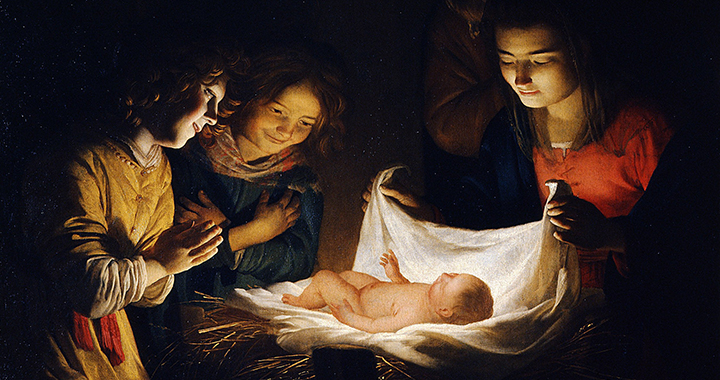“A cold coming, we had of it, just the worst time of year for a journey and such a long journey”, is how T.S. Eliot’s ‘Journey of the Magi’ begins. Semi-desert can be very cold on a clear night, and we know it was clear, because the wise men were following a star.
No-one knows when our saviour was born, but the early, persecuted Christians, probably celebrated Jesus’ birth on December 25th because the Romans were celebrating ‘Sol Invictus’, the birth of the unconquered sun, and Saturnalia when people feasted, exchanged gifts and did not have time to watch what the subversive Christians were up to.
In 336A.D., when Constantine, a Christian convert was Emperor, the church in Rome began to formally celebrate Christmas Day on December 25th.
As a child, I was fascinated by descriptions of the aftermath of his birth – the Adorations by Magi and Shepherds and started a collection of secondhand Christmas cards of these subjects. What particularly fascinated me was the contrast between the elaborately dressed Magi, a Magus is a wise man, with their extravagant and costly gifts adoring the Christ child and the simplicity and piety of the shepherds in their ragged clothes and offering a precious lamb as a gift.
Two of my favourite treatments of this subject are The Adoration of the Shepherds by Gerrit van Honthorst in The National Gallery and the Portinari Altarpiece in the Uffizi. Honthorst (1592-1656), was a Dutchman from Utrecht, who with two friends visited Rome in the early 17th Century and fell under the spell of Caravaggio and adopted his dramatic use of chiaroscuro (light and shade). He was known as Gherardo dalle Notti, Gerard of the Night, in Rome. This picture was painted there in 1610.

The Portinari Altarpiece was commissioned by Tomasso Portinari, a prominent banker, working for the Medici in Bruges, from the brilliant Flemish artist Hugo van der Goes (c.1430/40-1482) around 1472-5. The shepherds have coarse, sunburnt faces, rough hands and grimy fingernails, all of which is accentuated when one looks at the beautiful Virgin Mary, with her pale skin and delicate hands.

Contrast these depictions of simple, pious shepherds, with Benozzo Gozzoli’s (c.1421-1497) ‘Procession of the Magi’ in the Palazzo Medici Riccardi in Florence.
The richly caparisoned horses, the smartly attired attendants and the exotically dressed Magi exude a sense of wealth and power. Benozzo and at least one assistant completed this miraculous fresco over a few months in 1459.

These paintings remind me of happy Christmases past, and my scrapbook of Old Master adorations.
David Dallas joined Christie’s in 1969, where he was the youngest person in a Technical Department (Old Masters). He subsequently became deputy head of the Picture Department at Phillips Son and Neale and ended his auctioneering career as International Director (Global Head) of Old Masters at Bonham’s in January 2015.







